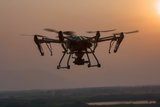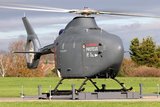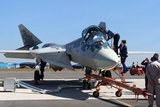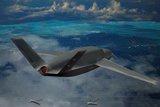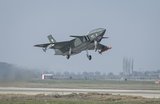Estonia and IAI sign one of the largest procurement deals in the country's history
The Mini-Harpy is a multi-purpose loitering munition manufactured by Isreal Aerospace Industries. (Photo: IAI)
On 2 May 2023, IAI announced that it had signed a deal with Estonia for the procurement of "advanced long-range loitering munitions", which was one of the "most expensive defence procurement Estonia has ever made".
According to the announcement, the award came after a market research project which began in the spring of 2022, and deliveries are due to conclude in 2024.
The contract value or drone selected was not mentioned in the announcement. However, on the same day, Estonian Defence Minister, Hanno Pevkur, tweeted that the contract was worth nine figures and posed alongside IAI's Mini Harpy.
Based on this information and the estimated unit cost of the loitering munition, Shephard's Defence Insight estimates that Estonia has acquired 985 units of the platform in a €100 million ($113.04 million) contract.
The contract announcement comes slightly later than anticipated. In February 2023, Hanno Pevkur said the country was set to procure loitering munitions to enhance its indirect fire capabilities in Q1 of 2023. At that time, EER, Estomia's public broadcaster, reported that the decision was made in light of Russia's aggression.
Related Programmes in Defence Insight
Related Equipment in Defence Insight
More from Air Warfare
-
![Brazilian Air Force conducts first live fire of Meteor missile from Gripen E]()
Brazilian Air Force conducts first live fire of Meteor missile from Gripen E
The major milestone for the beyond-visual-range air-to-air missile was conducted in November and expands the capabilities of the air force’s growing Gripen E fleet.
-
![India finally powers up engine production as it prepares to talk platforms with Putin]()
India finally powers up engine production as it prepares to talk platforms with Putin
Engine technology has been thrust into the spotlight ahead of Russian President Vladimir Putin’s visit to India this week, with the Su-57, S-400 and Kamov-226 expected to be high on the agenda.
-
![November Drone Digest: GA-ASI eyes Middle East for Gambit, Edge Group unveils new UAVs]()
November Drone Digest: GA-ASI eyes Middle East for Gambit, Edge Group unveils new UAVs
In November 2025, GA-ASI unveiled a new Gambit variant, the Gambit 6, and appears to be pitching the aircraft series to various customers in the Middle East, which is a fast-emerging CCA market. The Dubai Airshow also saw the unveiling of various Emirati aircraft from Edge Group.
-
![Baykar’s Kizilelma drone makes progress with first air-to-air kill]()
Baykar’s Kizilelma drone makes progress with first air-to-air kill
This test is the latest milestone achieved by the indigenous drone, destroying a target using a beyond-visual-range missile.







